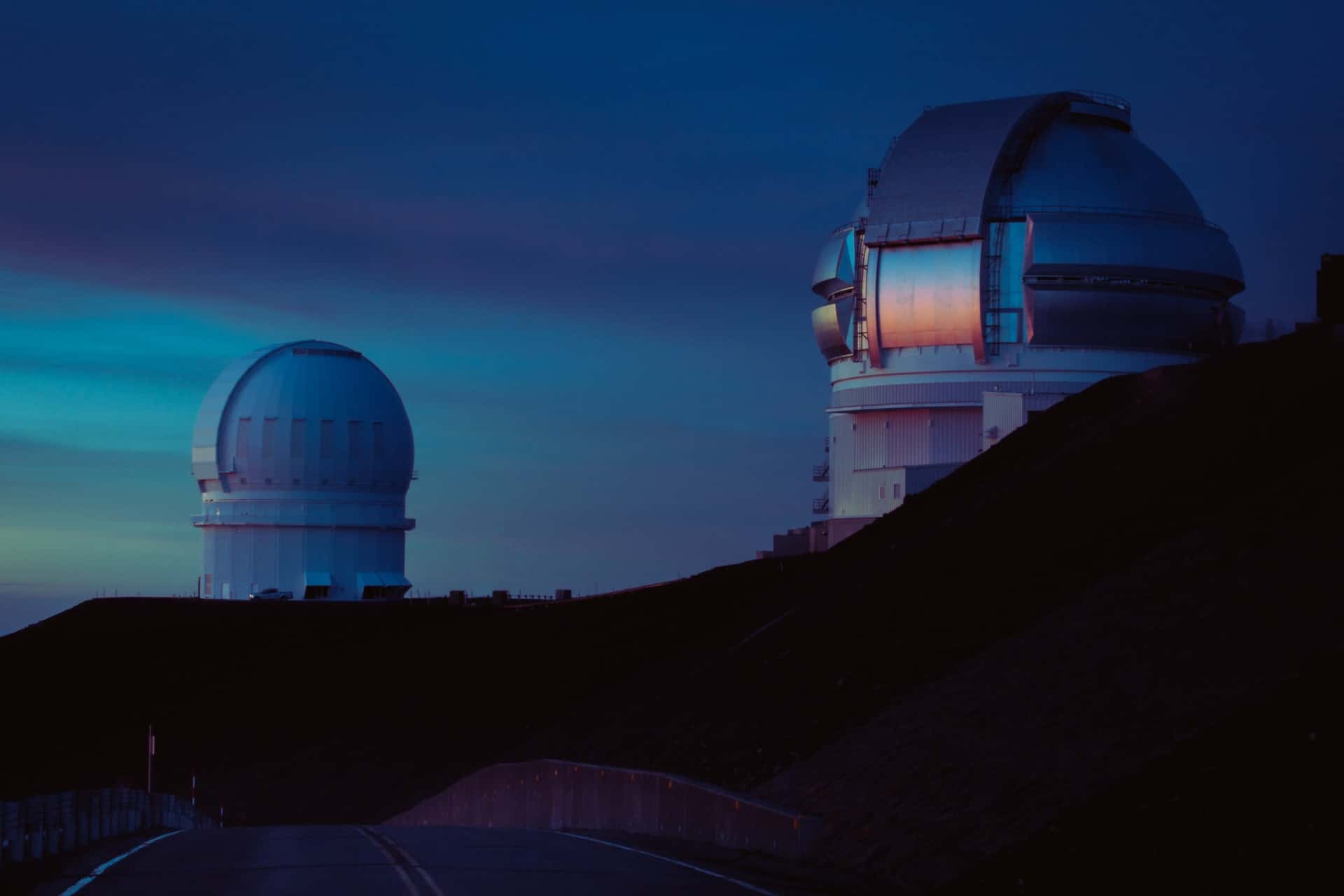
Types of Telescopes: Exploring Faraway Stars
June 1, 2022 - Emily Newton
Revolutionized is reader-supported. When you buy through links on our site, we may earn an affiliate commission. Learn more here.
Under ideal conditions, the average person can see between 2,500 and 5,000 stars at night with the naked eye. That means there are no clouds in the sky, the moon is new and there is no light pollution. That might sound like a lot until you consider there are an estimated 100 billion stars in the Milky Way. Astronomers estimate there are upwards of 200 billion trillion stars in the known universe.
Human eyesight isn’t designed for stargazing. As a result, even with the best eyesight, an astronomer can only observe a fraction of the stars in the known universe. That is where telescopes come in. Let’s take a closer look at the history of the telescope. What types of telescopes do astronomers use today to paint a clearer picture of the universe that we call home.
Telescopes: A History
Today, anyone can pick up a simple telescope for less than a hundred dollars. These tools help them to see the night sky a little clearer. Early scientists gazing upward had to develop new tools to accomplish the same tasks.
The first telescope dates back to the early 1600s. Jacob Metius submitted a patent request for a tube-shaped device containing lenses of differing shapes. The resulting combination provided three to four times magnification, making it easier to spot details in the night sky. The national government of The Netherlands decided against awarding the patent. They believed the telescope was too easy to duplicate. In recompense, they did provide a small award to Metius. They hired a craftsman — Hans Lipperhey — to build some versions of the world’s first telescope.
Historians often credit Galileo Galilei with inventing the telescope. He may have helped, but it wasn’t his original idea. Instead, the Italian astronomer and inventor made changes and adjustments to the device. He increased its magnification and expanded humanity’s understanding of the universe. These telescopes are the precursor of the modern optical telescope.
In the intervening centuries, telescopes have evolved from small portable devices. Today, they are massive stationary establishments that can be dozens of feet long. One telescope can contain hundreds of lenses, mirrors and other optics necessary to capture the night sky. As of 2022, the world’s largest optical telescope is the Gran Telescopio Canarias in Spain’s Canary Islands. This telescope contains a mirror 10.4 meters or 34.1 feet in diameter.
Types of Telescopes: Optical
Anything we can observe with the human eye exists on the visible part of the spectrum. Consequently, this narrow portion of the spectrum is where optical telescopes operate. They can capture distant images of celestial bodies we can see with the naked eye. Astronomers classify optical telescopes based on the type of optics they use.
Refracting Telescopes
Firstly, we have refracting telescopes that use lenses and sometimes prisms to capture distant images. These are known as dioptrics.
Reflecting Telescopes
Second, we have reflecting telescopes, which use mirrors instead of lenses to collect light.
Cadatioptric Telescopes
Finally, we have catadioptric telescopes, which use a combination of both mirrors and lenses.
Binoculars and monoculars use the same lens and mirror combinations that you might find in an optical telescope.
Anyone looking for a backyard telescope needs to consider three specifications:
- Focal length, which defines magnification
- Focal ratio, which determines light gathering ability
- Aperature establishes the size of the primary lens or mirror.
The point of an optical telescope is to gather light. The ratio of lenses to mirrors allows even small telescopes to pick up enough light to observe the night sky.
Types of Telescopes: Electromagnetic
We see a lot on the visual portion of the spectrum. Focusing on that alone is like listening to a single note in a symphony and claiming you’ve heard it all. The rest of the electromagnetic spectrum hides a wealth of information that we’ll miss if we rely on optical telescopes alone.
Radio Telescopes
Radio telescopes, as their name suggests, monitor radio frequencies. They use massive satellite dishes or a combination of smaller arrays to observe distant objects in the night sky. For example, the Arecibo Telescope’s main dish was 306 meters (1000 feet) in diameter before it collapsed in 2020. Alternatively, the Very Large Array in Socorro, New Mexico, utilizes 27 separate 25-meter arrays spread across 22 miles of desert. They’re located in remote areas because modern technology can generate radio interference.
Infrared Telescopes
Infrared waves are just outside the visible spectrum. If you could see these waves, they would exist above the red band on a rainbow. The new James Webb Space Telescope uses a massive array of mirrors to capture infrared data without interference. NASA launched this telescope in 2021.
X-Ray Telescopes
Primarily, we use x-rays in medicine to detect broken bones. That isn’t the only place we’ll find them. X-rays are more energetic than most of the wavelengths on the electromagnetic spectrum. They pass through substances like mirrors that would reflect light. X-ray telescopes use cylindrical mirrors to redirect x-rays to a focal point where we can see them. As a result, x-ray telescopes capture pictures that would otherwise be invisible to the unaided eye.
Gamma-Ray Telescopes
The Earth’s atmosphere blocks gamma rays. That protection doesn’t mean that monitoring them isn’t essential. Black holes and active galaxies are both common gamma radiation sources. NASA launched the Fermi Gamma-Ray Space Telescope in 2008 to monitor this radiation in the solar system. Initially, the telescope was designed to last for up to ten years. As of 2022, it continues to monitor the space around Earth. NASA may even extend the mission again after this year.
Types of Telescopes: Particle Detectors
Astronomers and astrophysicists aren’t always looking for supernovas or gas clouds when peering upwards. Sometimes, the universe’s secrets hide in the smallest places.
Neutrino Telescopes
We know that neutrinos are subatomic particles that have almost no mass. Additionally, they have no charge, unlike protons and electrons. They pass through almost everything they encounter, making them nearly impossible to spot as they move through the universe. The easiest way to detect neutrinos is to put a mass sample in their path — and wait. AMANDA is a neutrino telescope located in Antarctica. This telescope monitors ice for bursts of Cerenkov radiation. These bursts indicate that a neutrino has passed through one of the ice atoms.
Solar Wind Detectors
In addition to the visible light and radiation, the sun constantly emits energetic particles called solar winds. Understanding how they move helps improve our grasp of the universe. NASA has multiple telescopes in orbit and here on the ground that monitor the movement of solar winds.
Painting a Picture of the Night Sky
There is so much in the night sky that we can’t spot with the unaided eye. Regardless of the details, different types of telescopes help fill in the gaps. They help us paint a clear picture of what might be happening out there in the night sky.
Revolutionized is reader-supported. When you buy through links on our site, we may earn an affiliate commission. Learn more here.
Author
Emily Newton
Emily Newton is a technology and industrial journalist and the Editor in Chief of Revolutionized. She manages the sites publishing schedule, SEO optimization and content strategy. Emily enjoys writing and researching articles about how technology is changing every industry. When she isn't working, Emily enjoys playing video games or curling up with a good book.







